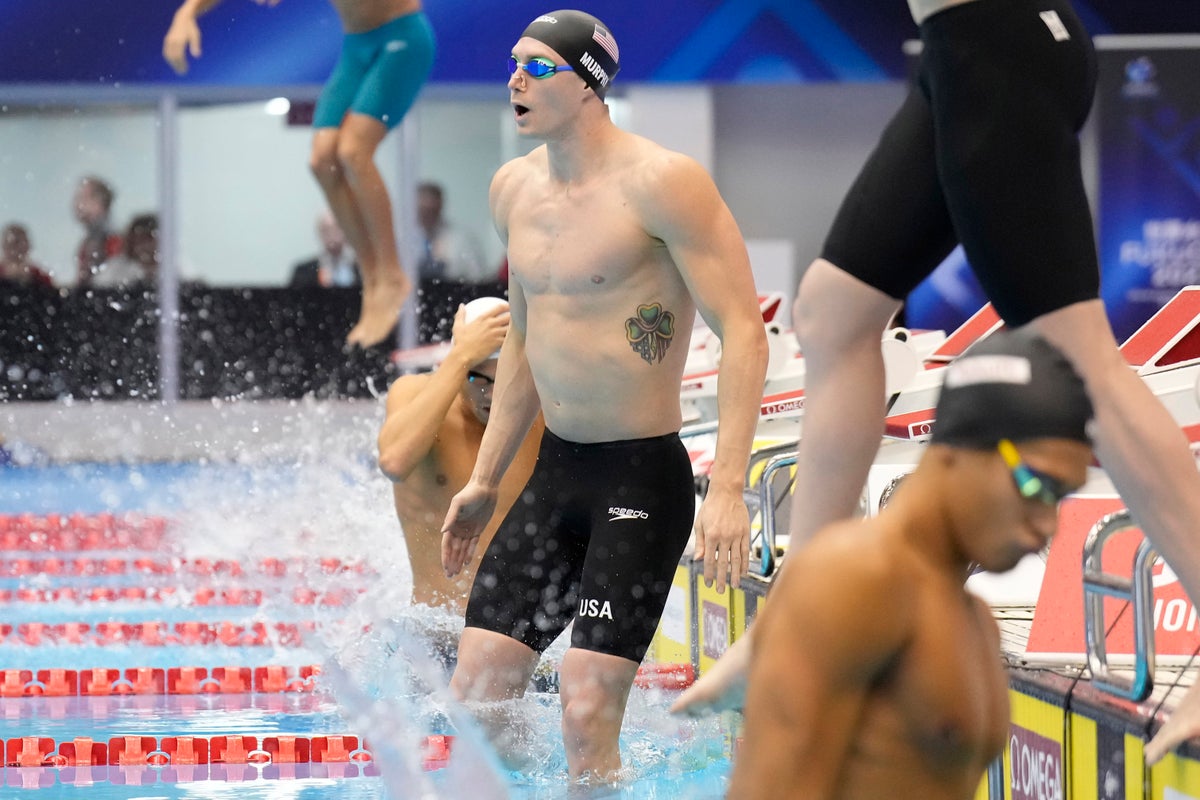
Fifteen years ago, Michael Phelps won a record eight gold medals at the Beijing Olympics wearing a high-tech swimsuit with a catchy name, the Speedo LZR Racer.
The super suit era lasted just one more year, thwarted by a ludicrous assault on the record books. But it still matters what a swimmer is wearing.
“It makes a huge difference,” said Abbey Weitzeil, a four-time Olympic medalist who is sponsored by Speedo. “Especially for the females. We have more coverage than the males. We want to take advantage of that.”
With the Paris Olympics about eight months away, Speedo released its newest suits this week with updated versions of the Fastskin LZR Intent and LZR Valor.
These sort of announcements no longer carry the fanfare that accompanied Phelps' unveiling of the LZR Racer ahead of Beijing or the rubberized suits that dominated the 2009 world championships.
But after 43 world records were set in Rome, the international governing body finally took some common-sense steps to eliminate the oversized influence that swimsuits — some of them providing full body coverage — were having on times.
Polyurethane suits that greatly enhanced buoyancy were banned. Today, suits must be made from textile materials and can only stretch from the waist to the top of the knees for men, from the shoulders to the knees for women.
That doesn't mean there isn't a significant bit of wiggle room in the development of today's swimsuits, all with an eye toward shaving off precious time.
“It really comes down to the margins of the race,” said Ryan Murphy, who has won four Olympics medals in the backstroke, including two golds. “Let's say you're talking about a 1% difference. Take the 100 back. That's a 51-second race for me. A 1% difference is a half-second.”
Which can be the difference between winning gold and not even claiming a spot on the medal podium.
Speedo's new suits were developed through a partnership with Lamoral, a company better known for developing protective coatings that are used to extend the life of satellites in outer space.
According to Speedo, this collaboration produced a suit with less absorption and more water repellence than previous efforts — and rekindled memories of the LZR Racer, which was developed with assistance from NASA.
Murphy said he tried out a couple of prototype suits before the final model came out. British swimmers based closer to Speedo's Aqualab facility went through more extensive testing.
“Every swimmer has different things they're looking for, different tests they're putting the suit through,” Murphy said. “It's always a long process. A lot of the suit development was happening during COVID times.”
Murphy has chosen to use the Valor suit, which is slightly thinner than the Intent and gives him the sort of comfort and flexibility he is looking for in an event that relies heavily on his legs.
“The Valor has a little bit more breathability,” the 28-year-old Floridian said. “At the end of the race, I want to be able to feel my legs."
Weitzeil, on the other hand, chose the Intent because she prefers that her body feel more compressed in the water.
“I love the tighter one,” said Weitzeil, a 26-year-old California native. “It's super flexible, but it molds to your body while also holding your posture. When I dive in, I can feel it holding my posture pretty well. I wouldn't choose any other suit over it. I feel super-comfortable in it. I trust it in my races.”
Murphy and Weitzeil are both too young to have competed during the super suit era, but they are intrigued by what it must have been like.
“I've never worn one, but I would love to throw one on and see what it's like," Weitzeil said. “It's crazy that people are breaking those world records now. For a while, it looked like the super suit records were never going down.”
Five world records that were set at that infamous world championships in Rome remain on the books 14 years later, all on the men's side.
The legacy of that era has yet to be thoroughly erased.
“Honestly, it almost felt like a different sport,” Murphy said. “There were a lot of things in that time that the suit could kind of physically cover up. Some of the training things, the suit covered up well. You were thinking about body shape and body position and technique a little bit less and just focusing on sheer force and sheer power.”
While today's swimsuits don't have the power to totally change the sport, they remain an important element in who touches the wall first. If nothing else, a swimmer who is confident and comfortable in what he or she is wearing is likely to perform better in the heat of a race.
“Speedo is constantly pushing the envelope on innovation,” Murphy said. “It really gives the athletes a lot of assurance when they go behind the blocks that they have the best chance possible."
___
Paul Newberry is a national sports writer for The Associated Press. Write to him at pnewberry@ap.org







